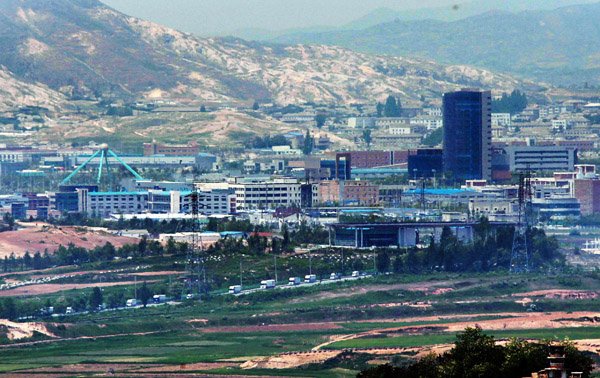
Kaesong Industrial Complex at the North-South Korea border is still operating despite Pyongyang cutting a military hotline with South Korea on Wednesday.
The hotline had been used mainly to facilitate cross-border travel at the Kaesong Industrial Complex for South Korean workers.
It was the last direct official link between the two nations.
Pyongyang has been angered by US-South Korea military drills, and the fresh UN sanctions that followed its third nuclear test in February.

In recent weeks North Korea has made multiple threats against both the US and South Korea, including warning of a “pre-emptive nuclear strike” on the US and the scrapping of the Korean War armistice.
North Korea is not thought to have the technology to strike the US mainland with either a nuclear weapon or a ballistic missile, but it is capable of targeting some US military bases in Asia with its mid-range missiles.
More than 160 South Korean commuters went through border control on Thursday morning to start work at the complex, after being approved for entry by North Korea, officials said.
North Korean authorities had used a civilian phone line to arrange the crossing, they added.
Over 500 South Koreans are scheduled to cross the border in Kaesong in Thursday.
“We say that Kaesong industrial complex will go on running, even if the war breaks out. I don’t feel so nervous,” Jang Seon-woo, a South Korean worker, told AP news agency.
The joint project in Kesong, which was established as a sign of North-South co-operation, is a source of badly-needed hard currency for the North.
Around 120 South Korean firms operate at Kaesong industrial park, employing an estimated 50,000 North Korean workers.
There have been disputes and the North Koreans have, on occasion, blocked access across the Demilitarized Zone that divides the two Koreas, who remain technically at war.
North Korea has already cut both a Red Cross hotline and another line used to communicate with the UN Command at Panmunjom in the demilitarized zone.
An inter-Korean air-traffic hotline still exists between the two sides, according to reports.
Meanwhile, in a phone call on Wednesday, US Defense Secretary Chuck Hagel told his South Korean counterpart Kim Kwan-Jin that the US would provide “unwavering” support to South Korea.
Chuck Hagel also told his South Korean counterpart that the US-South Korea alliance was “instrumental in maintaining stability on the Korean peninsula,” Pentagon spokesman George Little said in a statement.
On Tuesday, North Korea said it had ordered artillery and rocket units into “combat posture” to prepare to target US bases in Hawaii, Guam and the US mainland.
In a statement on Wednesday, North Korea’s official news agency KCNA also said that North Korea’s air force was ready to “wipe out” US military bases in Guam.
However, Guam Governor Eddie Baza Calvo described an attack as “unlikely” and urged residents not to let the threats “distract from [their] day-to-day lives”.
[youtube FwdaTCe9zmY]